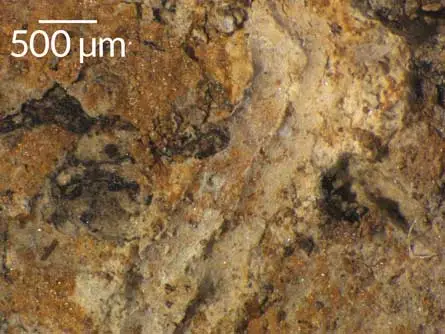Parasites wormed way into dino’s gut
Tiny tunnels crisscross fossilized stomach contents of 77-million-year-old hadrosaur

MORE THAN BONES A 77-million-year-old duck-billed dinosaur nicknamed Leonardo may have been infected with parasitic worms.
Red Rocket Photography/The Children's Museum of Indianapolis/Wikimedia Commons (CC BY-SA 3.0)








